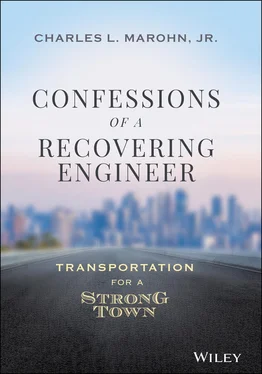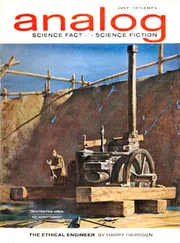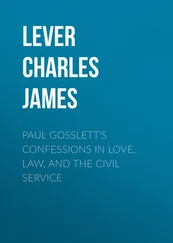“It will allow cars to navigate more smoothly, which makes it safer.”
“I don't understand.”
In traffic engineering, randomness is the enemy of safety. The more variables that we can remove, the more the driver can predict what is going to happen and the safer things become. For the driver, a road that is straight is safer than one with a lot of curves. A road that is flat is safer than one with a lot of hills.
It was difficult for me to explain something so self-evident, so I tried to expand the conversation to an aspect of design that would hopefully be easier to grasp — someplace where we could develop a common understanding and build to more complicated concepts.
“Along with fixing deficiencies with the grade and the alignment, we will be widening the driving lanes.”
“What will that do?”
“It will improve safety.”
“How does widening the lanes improve safety?”
Okay, this was getting frustrating. It is a little too obvious that wide lanes are safer than narrow lanes. Anyone who has tried to drive down a narrow street, having been forced to slow way down to avoid hitting things, knows that having more space gives the driver a higher safety margin. This was Road Design 101— the most basic of concepts. I was starting to think that this woman, despite her friendliness, just didn't want to get it.
“Along with fixing the deficiencies in the grade and the alignment, it will allow traffic to flow more smoothly.”
“What do you mean by allowing the traffic to flow more smoothly? How does that improve safety?”
“Cars will be able to move without worrying about hitting things, so it will be safer. That is why we are also expanding the clear zone.”
“What do you mean by expanding the clear zone?”
Having a clear zone on each side of the roadway is another one of these basic design concepts universally understood to improve safety. If a car goes careening off the road surface, all that kinetic energy needs to be dissipated. We don't want the car to be brought to an abrupt stop by hitting an obstacle; we want the process of slowing down to happen more gradually.
All traffic engineers have heard the story of a driver losing control, the car going off the road and hitting an obstacle that should never have been there, with tragedy being the predictable result. Establishing an area on each side of the road that is clear of obstacles increases the chance that people will walk away from such an incident. I was taught to insist on it. No compromises with safety.
“We will be removing obstacles from the clear zone to improve safety.”
“What is the clear zone?”
“It is the area on each side of the street that we need to keep clear of obstacles in case cars go off the road.”
“What kind of obstacles?”
“Mostly trees.”
I steadied myself because I had been in this situation before and knew what was coming. We were standing in a yard full of trees, many of which were going to be cut down. I knew she wasn't going to like that. It seemed a selfish reaction to me.
Most people seem to want progress. They show up at public meetings and demand all of the conveniences that come with driving. They want it, that is, until it impacts them directly. Then progress must be stopped. Then they all turn into environmentalists. I'd seen it many times. She seemed to fit the profile, especially with her next question.
“So, you are going to remove the trees from the clear zone to improve safety?”
“Yes. Exactly.”
“How big is the clear zone?”
I took a deep breath and looked down. “The clear zone is 25 feet on each side of the street.”
“Twenty-five feet! That is my entire front yard!”
I wasn't going to compromise on safety. I had a code of ethics demanding that I put the welfare of the general public ahead of concerns like this. I had worked years to get my license, and I wasn't about to risk it by not following the design standard.
Plus, the firm that I worked for had professional liability insurance, which I knew was expensive. We live in a litigious society. There was no way that I was going to be bullied into doing something irresponsible — something that threatened my client or my firm, let alone the people who would drive along this road.
“I'm sorry, but the standard requires that for the road to be safe, all obstacles must be removed from the clear zone.”
“Do you understand that my children play in this clear zone?”
“I would not recommend that. It would not be safe.”
“But it is safe today. I thought you were doing this project to improve safety. How is the street safer if my children can't go outside?”
I was having a conversation with this woman at the request of the mayor. She was one of his constituents. I knew that my job was to listen to her and answer her questions, but it was also to demonstrate that the city had performed due diligence on the project. If she showed up at a future council meeting complaining about her kids not being able to go outside to play, she was less likely to be taken seriously if everyone knew that I had personally met with her, answered her questions, and seen her property firsthand. I'm the professional and, after being on site and meeting with her, I can confidently say that nothing unique is happening with her property, regardless of what she might suggest at a public hearing.
“Building the street to meet the standard will enhance safety by allowing cars to flow more smoothly.”
“More smoothly. The cars will just drive faster, will they not?”
By statute in my state, the city is not able to enforce any speed limit lower than 30 miles per hour. There are exceptions, but those require extensive studies and proof that there is some unique circumstance justifying the lower speed limit. We weren't going through that effort here. The city didn't have the budget for such a study and, even if they did, there were no special circumstances that would justify doing so.
Once the street was built, if there was reason to believe that 30 mph was the wrong speed, I could do a speed study and make that determination. Such a study would involve monitoring the speed that traffic was naturally flowing, which my experience suggested was unlikely to be less than 30 mph. She should be careful what she wishes because a speed study is more likely to result in a higher speed limit than a lower one.
“We will post a speed limit after we do a speed study and determine the safe speed for the street,” I said with some added authority in my voice.
She replied with equal authority. “But cars drive slow now. Slow is the safe speed through my neighborhood where my children are playing in my yard. How does it improve safety to have a drag strip out my front door?”
“It will increase safety because traffic will flow more smoothly. That is the standard.”
At this point, the two of us had cycled through all of the typical objections that people bring up to oppose such projects. We had started with a friendly line of inquiry and eventually proceeded all the way to unresolvable acrimony. I had done everything that had been asked of me, and I was thinking it was time to move on.
She was not ready to let things go, however, and I started to sense that this conversation would get very emotional before we were done. Her next words reinforced my uneasiness.
“I am not aware of anyone being killed in an accident on this street, and I have lived here for thirty years. Are you aware of anyone being killed?”
Читать дальше












